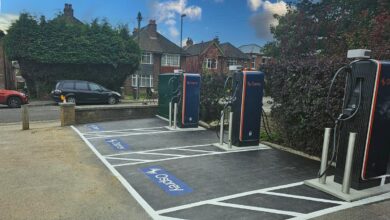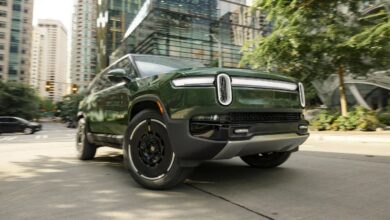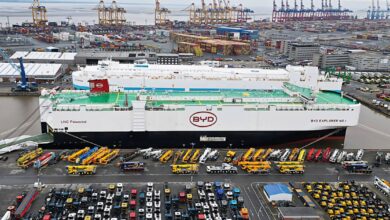Charging ahead with electric commercial vehicles
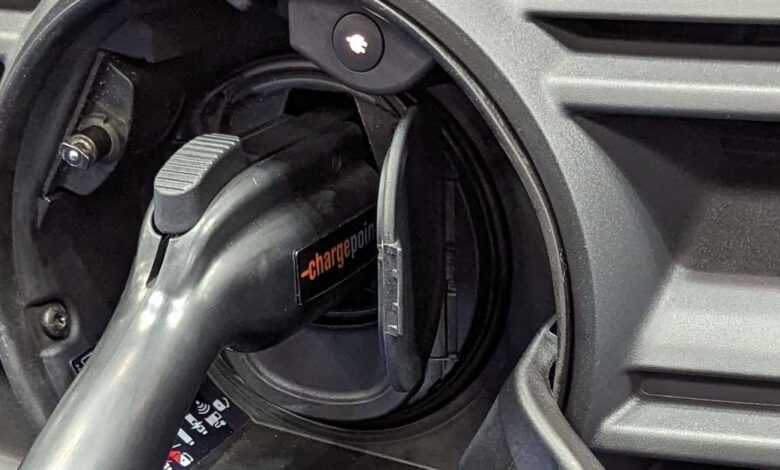
By Dr. Walter Rentzsch, Giovanni Schelfi and Dr. Wilfried Aulbur
The need to combat greenhouse gas (GHG) emissions is real, and so is the need to limit the negative impact of increasing temperatures on our planet and our economies. The transportation sector contributes 29% to U.S. GHG emissions. Medium- and heavy-duty vehicles account for 23% of the transportation sector and participants in the commercial vehicle industry understand that they must be part of the solution in driving the decarbonization of their industry.
Progress in electric vehicle technology has been steady, with battery prices decreasing, more purpose-built platforms coming to market and overall vehicle performance in terms of improving range. These advances have happened in a relatively short timeframe. While we can look back to about 130 years of development efforts for the diesel engine, the industry’s focus on batteries and battery-electric vehicles at scale is less than 10 years old.
However, as the way forward for vehicles in the commercial vehicle industry becomes clearer, second and third order challenges emerge.
Purchase prices remain prohibitively high compared to diesel vehicles, with a negative impact on use cases with positive total cost of ownership. Operational restrictions limit the number of routes on which vehicles can be deployed currently or require more electric vehicles than diesel vehicles to transport loads from Point A to B. Charging times are still long, as well, reducing asset productivity and challenging existing driver compensation models.
Adapting operating strategies
Fleet operating models need to be adapted and new capabilities are required. Infrastructure constraints such as parking space availability limit electrification options. Financial needs both for vehicles and infrastructure are significant and stretch the balance sheet of fleets, especially those with fewer vehicles. Working with utilities is challenging and lead times for infrastructure installation exceed typical industry lead times for asset purchases by multiples.
These challenges combined with the current critical discussion around electric vehicles leads to a higher degree of perceived technology risk as fleets consider moving from diesel to electric propulsion. In some sense, many fleets feel caught between a rock and a hard place, with still maturing technology and business models on the one side and regulatory and public opinion pressure on the other.
In particular, the focus of fleet discussions has shifted away (or at least lessened) from vehicle availability and moved toward infrastructure and electric grid availability.
To understand this situation better and hopefully derive some relevant implications and insights, we decided to model the 100% build-out case for electrification of the U.S. Class 3 through Class 8 commercial vehicle fleet.
The goal of our study was to determine the total investment needed to develop the vehicle charging infrastructure, electricity distribution grid infrastructure and the electricity generation and transmission infrastructure needed to support 100% battery-electric vehicle (BEV) penetration in the medium- and heavy-duty commercial vehicle fleet. To be clear, this analysis is not a scenario projection in terms of how BEV penetration progresses over time, but an attempt to determine the investment effort required for the transition from fuel to electrons based on reasonable conservative assumptions.
Three charging locations
Our model distinguishes between three fundamental charging location types: on-site charging, local on-route charging and highway on-route charging for long-haul vehicles.
On-site charging covers private chargers at fleet-owned locations as well as shared charging hubs with dedicated availability for fleet customers. Local on-route charging is relevant for high-mileage local applications and provides public access to direct current fast charging (DCFC) chargers – in contrast to a mix of Level 2, Level 3 and, in limited cases, DCFC chargers for on-site charging. On-route highway charging is covered by DCFC chargers as well as Level 2/Level 3 chargers for the overnight charging of parked trucks.
For the local charging network simulation, we leveraged fleet telematics data from the National Renewable Energy Library (NREL) to identify how Class 3 through Class 8 vehicles are operated during the day (excluding long-haul). The mileage distribution and duty cycle determined the allocation of charging needs across overnight depot and on-route “top-up” charging. Based on this information, we determined the charging infrastructure that needs to be installed both at depot and on-route locations. Aggregated average load curves per vehicle class were derived which, combined with the regional distribution of vehicles per weight class, allows us to simulate charger installations and load curves at the county level.
For long-haul vehicles, we analyzed the current distribution of refueling stations across highways, determined the number of long-haul vehicles that need to recharge at every location based on route-specific truck traffic volumes and differentiated between top-up and overnight charging needs. This in turn drives charging infrastructure investments at each station. Again, we generated an aggregated average load curve which enabled us to simulate charger installations and load curves at the county level.
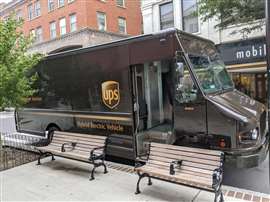 Roland Berger’s study suggests that electrification may not be the only option for the decarbonization of medium- and heavy-duty on-highway vehicle fleets. (Photo: Chad Elmore)
Roland Berger’s study suggests that electrification may not be the only option for the decarbonization of medium- and heavy-duty on-highway vehicle fleets. (Photo: Chad Elmore)
And the price is…
Assuming a usable range for Class 6 through Class 8 trucks at 250 miles and DCFC chargers of 500 kW for local on-route and 1 kW for highway charging, our model showed an investment need of US $620 billion into chargers, site infrastructure and utility services. On-site charging via Level 2 and 3 chargers accounts for the lion’s share of the investments at US $500 billion. On-route charging investments are nearly equally split between local 500 kW chargers and on-highway 1 MW chargers (US $69 billion and $57 billion, respectively).
Local charging cost is driven significantly by heavy-duty vehicles that require Level 3 or even DCFC charging at their depot location. On a per vehicle basis, heavy-duty vehicles require a charging infrastructure investment of US. $145,000 vs. US $54,000 for medium-duty vehicles.
In addition to these investments, utilities will need to spend around US $370 billion on distribution grid upgrades and new builds just to serve local charging demand from medium- and heavy-duty vehicles. Challenges in this infrastructure build-out result from the need to build infrastructure ahead of trucking demands to avoid bottlenecks and delays, which requires more sophisticated grid planning as well as regulatory support – which are both limited to date. The overall pace of utility investments will also be constrained by the need to control rate increases and maintain affordability.
Additional investments in generation and transmission are necessary and amount to US $44 billion according to our model. However, these investments are already part of the long-range plans of the power system operators.
The overall investment of close to US $1 trillion is indicative of the transformative nature and significant challenge that moving the logistics industry from internal combustion engine (ICE) vehicles to BEV entails. On top of this investment, significantly higher BEV prices and operational constraints impact total cost of ownership of BEVs further.
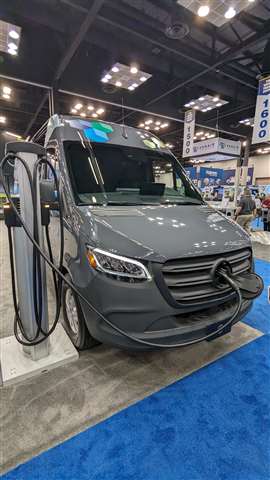 A battery-electric Mercedes van on display during Work Truck Week 2024. (Photo: Chad Elmore)
A battery-electric Mercedes van on display during Work Truck Week 2024. (Photo: Chad Elmore)
A number of implications
What does this mean for the pace of electrification in the commercial vehicle industry?
Selected implications of the study are the following:
■ Investment needs to be continuously optimized. For example, the current study assumes operation of BEVs in the same way as diesel trucks. This needs to be modified to account for BEV limitations, e.g., via optimized route planning and managed charging. OEMs, fleets, utilities and regulators need to work together to identify appropriate use cases and to enable rapid build-out of the required infrastructure. A faster improvement of technical performance than currently assumed would also have a positive effect on investment needs.
■ Investment needs to be phased. The basis for a phased roll out of electrification in medium- and heavy-duty vehicle needs to be financial viability – i.e., let’s focus on the use cases that are closest to TCO parity. In our view, these are several medium-duty use cases and heavy-duty use cases along clearly identifiable high-way corridors.
■ Electrification may not be the only option for decarbonization. Specific applications or routes may be more cost-effectively served by alternative solutions such as renewable diesel. We need to focus on cost-effective solutions in a technology agnostic way.
■ Given that the logistics industry in the U.S. has a yearly revenue of about $800 billion with low single-digit profits, it is unrealistic to assume that this transformation can be financed out of the cash flows of transport operators. While deployment of private capital in developing the charging infrastructure is preferred, government support in the form of targeted incentives and regulation is likely necessary until technology and business model improvements drive widespread TCO advantages of BEVs versus ICE vehicles.
The logistics industry will live up to expectations for safe, affordable and environmentally friendly transportation of goods and people.
We believe electrification is the most promising technology for widespread adoption at the time of writing. Given some of the challenges that an industry transformation such as the ICE to BEV transition entails, it is not a question of if but when. As we formulate expectations and policies, it is imperative to take the concerns of fleets and other stakeholders into account to formulate ambitious yet realistic targets and timelines.
About the authors: Dr. Walter Rentzsch is director, Dr. Wilfried G. Aulbur is senior partner and Giovanni Schelfi is partner for Roland Berger, a global strategy consultancy that regularly delivers studies about construction, agriculture and related industries for clients. Its customers are mobile equipment manufacturers as well as engine and power generation suppliers.
This article originally appeared in the May 2024 issue of Power Progress.

